Chiangrai Tours
About Asia Tour in Chiangrai with Two in Tow
Warm welcome ... Ava and Theo with Lisu children. Photo: Amanda Woodard
From riding elephants to working in fields, touring temples to visiting schools, Amanda Woodard sees Thailand and Cambodia through fresh eyes – those of her children.
I HAD a flashback as I stood on the station platform at Bangkok: I remember this train. I remember hauling a backpack into one of the economy carriages with my then-boyfriend. And I remember sitting through a long, uncomfortable night on the way to Chiang Rai with a sheet draped over my head to stop the bugs flying into my face through an open window.
“Mum,” this time more urgently from my eight-year-old daughter, “where is our cabin?” Did I ever imagine back then that I’d be here 25 years later with a husband and two children remaking this journey, albeit a lot more comfortably?
Yet here I am on a month-long trip through Thailand and Cambodia, introducing my children to one country I have such fond memories of and another I’ve always wanted to see.
There was never any question that we would travel overland to the north from Bangkok. Although the noisy rolling stock suggests this is the very same train I travelled on all those years ago, there’s the pleasure of watching a glowing, neon city filter out into a darkening rural landscape from the concealed viewpoint of a moving bed.
Despite the obvious changes to Bangkok – the sky train, the homogenous malls – a ride along the train track reveals something that hasn’t changed much: the urban squalor. In shacks of corrugated iron and bits of wood, tender moments of domesticity pass before our eyes. Grandma sits on a chair in her bra and skirt while daughter and granddaughters wash and groom her; a father returns from work and two skinny naked children run to grab his legs.
Elephant Camp located within the grounds of the Anantara Resort Golden Triangle, the property’s focus on the future of Thailand’s pachyderm population forms an integral part of the resort’s operations. On an ongoing basis, resident Elephant Camp Director, John Roberts, works closely with the Thai government’s Elephant Conservation Centre in Lampang to develop Anantara’s camp as an elephant sanctuary.
When dawn breaks, it is over a misty and much prettier landscape on the outskirts of Chiang Rai. On my last visit to the north, I went elephant riding like every other tourist but this time I’m looking for something more authentic for the children. I’ve heard of an elephant-handling course in Chiang Rai run by “mahout”, people who live and work with elephants every day. But before we travel to the Golden Triangle region, we plan to venture into the mountain villages.
In the minibus, our guide briefs us about the hill tribes and how opium has been overtaken by coffee as the most lucrative crop, which is welcome news since coffee is my drug of choice and there are now cafes everywhere.
We arrive at a Lisu village where we are to spend the night and, thankfully, our host family has children. Theo, 10, and Ava, 8, pull cards, dominoes and balls from their rucksacks to begin the international language of play. After a huge supper, which we eat cross-legged on the patio, the children get to wash from a mandi, a deep, tiled basin of cold water housed in an outdoor shack. Scooping water over each other amid much shrieking, they struggle into pyjamas and we settle on mattresses on the floor to prepare for an early start to our hike.
The hills are steep and fertile; even the villages appear to sprout out of the valleys. We pass women and children carrying sacks of ginger on their heads, oxen and goats following in their wake. The heat is merciless and on the outskirts of one hamlet we come across a water mill powering a threshing arm used to pound rice. The children wade across the stream to cool off and watch this ancient and beautiful machine up close.
Chiang Rai is known as “the land of a million rice fields” and, after a few days spent roughing it, we’ve booked into the Four Seasons Resort. The hotel was designed around working rice fields, the harvests of which are distributed to local villages. The gardeners who maintain the magnificent estate conduct rice-cultivation lessons for guests, so one morning we don customary wide denim pants, jackets, gumboots and coolie hats and set off across the fields.
Once new shoots have established in the water they are ready to be plucked and separated for replanting. This is where we come in. The most difficult part is moving through the sticky mud, without overbalancing, while embedding your rice shoots evenly apart. Theo and Ava also have a go at threshing harvested rice and separating husks from the grain using woven trays almost as large as they are to swirl and lift the rice into the air.
This is a single morning of labour in what is otherwise a few days of luxury. Our suite comes with a live-in housekeeper, Khun Tom, or Tommy as she prefers to be known, whose charm and warmth wins us over in seconds, as do her home-made cakes. Reaching the resort pool and restaurants entails an idyllic stroll beside a lake over which fireflies twinkle at night. But it’s hard to stray from our own private pool with its views over the rice paddies and my only advice if you decide to come here is to make it the last stop on your journey because you may never want to leave.
But we have an appointment with elephants and so leave we must for a two-hour journey to the very apex of Thailand where the country touches palms with Laos and Burma. The elephant camp is based at Anantara resort in Chiang Rai, which has magnificent views from all its rooms across a misty valley to Laos.
Anantara has been home to the elephant foundation since 2005 when the first rescued elephant and its mahout family came to live here
Elephants are more than just an age-old symbol of Thailand - at Anantara Resort & Spa Golden Triangle, they are a lifestyle. Make your next holiday an adventure with a three-day mahout training course at Anantara's own world-famous Elephant Camp. Learn how to feed, bathe and ride these gentle giants while taking in the beauty of one of Asia's most evocative corners of mountain landscape.
. It offers an alternative for the mahout to hawking elephant rides to tourists on the streets of the big cities. The resort encompasses a village where the women cultivate silkworms and weave silk, the children can go to school and the men (and some women) tend the working elephants.
Our day at the camp begins by changing into mahout denims and meeting the elephants, including a newly arrived and temperamental baby. Learning Thai commands to control your elephant is the first step and the children quickly become fluent: “pai” (go forwards), “baen” (turn) and, most importantly, “how” (stop). Time to get on board and we are shown several ways to do this. One way is for the elephant to lower its head to the ground; the mahout leapfrogs nimbly on to its neck and then turns to face the right direction.
Less nimbly, I attempt this manoeuvre, causing hilarity among the mahout’s wives. But most heart-stopping is the method whereby the elephant lies down while Ava sits astride, perpendicular to the ground, and grabs both ears. The elephant then swings itself upright, my daughter hanging on for dear life.
Riding bareback through the forest on these extraordinary, intelligent creatures is a highlight of our trip and at the end of the day we ride them down to the river for a bath. Theo’s elephant immediately submerges so he stands up looking like he’s walking on water. My husband’s elephant obligingly fills its trunk and repeatedly soaks him while he scrubs its back. Tired and elated, we head back to the resort for supper and the elephants roam freely back to their favourite spot near the river.
Two days later we’re looking at another noble elephant, only this one is carved of stone on a plinth near Angkor Wat in Cambodia. After an overnight train back to Bangkok, we have travelled by road to Siem Reap, the gateway to the magnificent 12th-century Angkor temple complex and heart of the Khmer civilisation.
Our minibus and guide are from the locally based company ABOUTAsia, which ploughs its profits into funding local primary schools for disadvantaged children. Having a guide that can negotiate this site, spread over 200 square kilometres, and avoid the worst tourist logjams is vital. We have Bunchhay, who loves Angkor so much he even has family picnics here on days off.
We begin at one of the “jungle temples”, Ta Prohm. By the 15th century, the Khmer civilisation was in decline and the temples were abandoned and reclaimed by the forest. Although restoration is going on in different parts of Angkor, many temples have been left largely as they were found when stumbled upon by European explorers in 1860.
Ta Prohm in Cambodia is one of the more famous Angkor temples and is a very popular spot, second only to Angkor Wat temple for tourists. The temple is located 12.1km from Siem Reap within the main UNESCO archaeological park
At Ta Prohm, the roots of a gigantic silk cotton tree are wrapped like the tentacles of a giant octopus around the entrance. This is where Angelina Jolie emerged as Lara Croft in Tomb Raider and gaggles of South Koreans all want to re-create the moment on film.
None of them are looking at what Bunchhay is showing us – something even more remarkable.
On one of the thousands of bas-reliefs is a carving of a dinosaur no more than 25 centimetres square. It’s unmistakably a stegosaurus. The question arises: how did the Khmer know about the existence of dinosaurs? They may have found bones but it required a complete set to re-create this image. The thought is intriguing.
Our itinerary, designed by ABOUTAsia with children in mind, ensures we don’t get “templed out”. One morning we take to mountain bikes to cycle in the forest around outlying temples, hopping on and off when Bunchhay wants us to see something close up. Another day, we take a trip on the mesmerising Tonle Sap lake, the largest in south-east Asia. In a strange phenomenon, the river that feeds it reverses its flow twice a year, dramatically influencing the level of the lake. Surrounding villages have had to adapt by constructing their homes, schools and temples on bamboo stilts up to 10 metres high. We walk to the dock through one village with sheets of prawns drying in the sun and children playing games of skittles with plastic bottles. It’s hard to believe this will all be under water in a few months’ time.
As we put out across the vast, coffee-coloured lake in a converted fishing boat, the children throw themselves into a hammock strung across its width. The water, which turns azure blue at other times of the year, yields some of the richest fishing in Asia and we pass entire families pulling loaded nets into their boats.
Contemplating the tranquillity of this scene, it’s worth remembering that this is a country only now shaking off the trauma of the genocidal regime of the Khmer Rouge. Although Cambodia’s recent history isn’t palatable enough to be taught yet in schools, at least schools have emerged again.
The effort to get the country back on its feet is huge and in Siem Reap, almost every business donates to charity in one way or another.
ABOUTAsia was started with one aim - to generate profits through providing innovative, quality travel solutions in Cambodia, and thus sustainably fund the support of rural education. By the start of the school year in 2010, ABOUTAsia Schools was supporting 9000 students
The Hotel de la Paix, where we are staying, runs a sewing school for disadvantaged girls to teach them skills and provide machines. Our children, however, are curious to see what a Cambodian school looks like so Christopher Smith – an avuncular chap who used to work for Unilever but now works tirelessly for the charitable arm of ABOUTAsia – takes us to see a couple of the schools the company has helped to fund.
I can see my two thinking “where is the whiteboard, the computers?” Where is anything? Sixty eager children are sitting patiently in an open-sided building with benches and chairs. There is no equipment but they have heard that guests are coming, which usually means new stuff. My children have brought pens, paper and posters but it is the balloons and sweets that are most in demand. As everyone joins in batting balloons to each other, this time I get a flash forward; an image of my children, grown-up, revisiting this place maybe as volunteer teachers. Who knows, I might even come with them.
Need to know
It’s challenging but not impossible to take children on a touring holiday and it all comes down to good planning. I got the children involved early on so that they were in on the adventure from the beginning. Exploring new places, relaxing and just having time to talk, argue and play together have been some of the best times we have spent as a family. The children gained confidence, made friends easily when we were on the move and learnt about the world at large. The times when they got fractious were hard work for us but blew over after a bit of shouting on all sides. The children could find trekking and sightseeing hard going at times, so I balanced them with activities they love doing (elephant riding, swimming, mixing with other children).
What the children loved Ava’s favourite part was the mahout training, where she fell in love with the elephants, whereas Theo enjoys his comforts and chose our stay at the Four Seasons Resort as his highlight.
What the adults loved The Golden Triangle has an atmosphere like no other. The confluence of rivers and misty valley that connects Thailand, Laos and Burma is somewhere I could have lingered. The afternoon we spent with Cambodian children in a temple school funded by ABOUTAsia was memorable. We chatted with young monks while my kids played until dusk with local children, easily overcoming language and cultural barriers.
Top tip Buy a cheap digital camera for each child. Not only do they enjoy making their own record of the trip but it keeps them busy in temples and museums. It’s also amazing how different things appear through children’s eyes.
Chiangrai Tours
Essential Tips for Your Chiang Rai Thailand Adventure
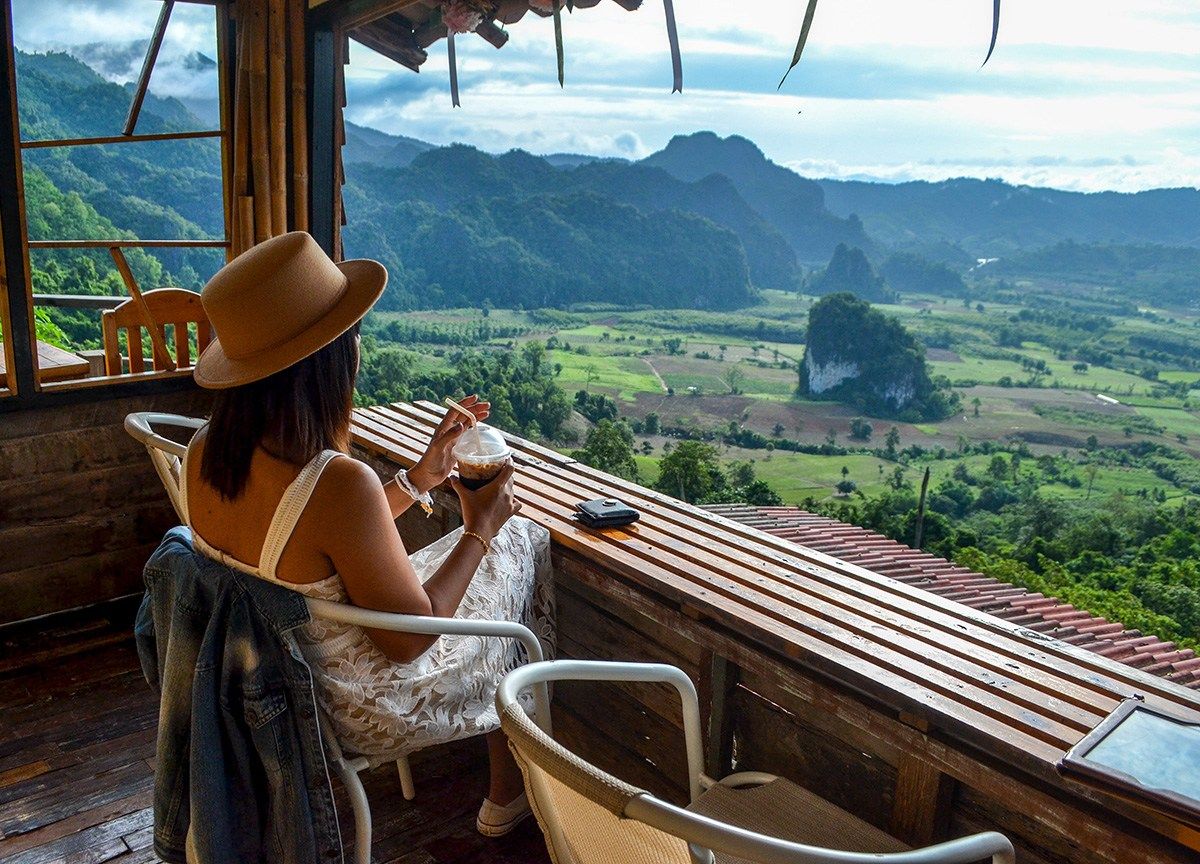
Are you ready to explore Chiang Rai, Thailand? Whether you’re a first-time visitor or a seasoned traveller, navigating this enchanting city requires some insider knowledge. In this guide, we’ll walk you through the top 10 things to remember to make the most of your Chiang Rai experience.
Chiang Rai Thailand has much to offer, from the iconic White Temple to the vibrant markets and lush landscapes. Understanding the local customs, must-visit attractions, and hidden gems can elevate your trip from good to unforgettable.
When planning your itinerary, consider the best time to visit Chiang Rai, essential travel tips, and unique experiences to make your journey one for the books. Let’s dive in and discover the essence of this captivating destination.
Prepare for a culturally rich adventure with stunning temples, flavorful cuisine, and warm hospitality. Get ready to immerse yourself in the beauty and charm of Chiang Rai while making lasting memories along the way.
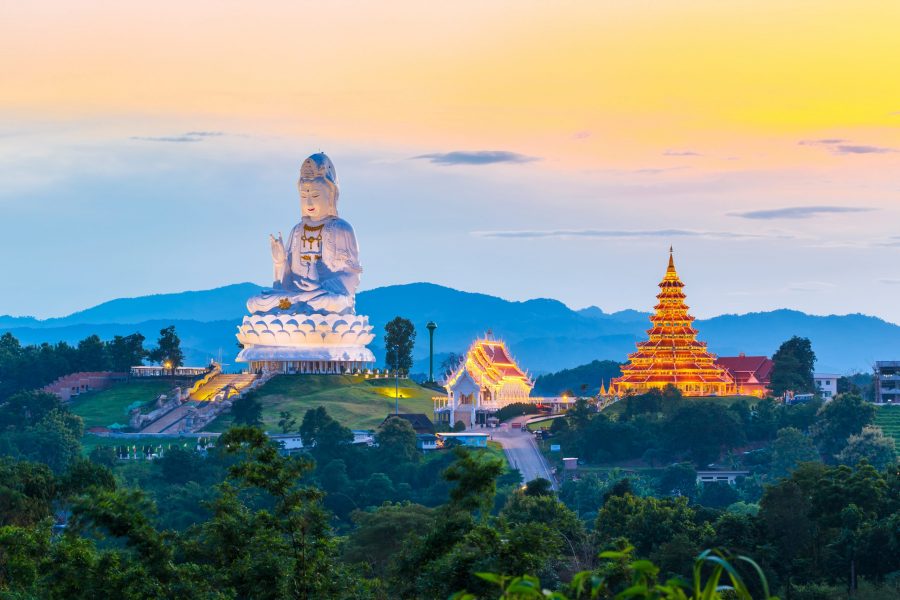
Best Time to Visit Chiang Rai
If you’re planning a trip to Chiang Rai, it’s crucial to consider the best time to visit to make the most of your experience. Here’s a breakdown of the optimal season for travel and the weather conditions to keep in mind:
Optimal Season for Travel
The ideal time to visit Chiang Rai is during the cooler months, typically from October to February. This period falls within the dry season when temperatures are milder, ranging from comfortable to slightly cool.
The weather is more pleasant for exploring the city’s attractions, temples, and natural wonders without the sweltering heat of the summer months.
Weather Conditions to Consider
During the dry season, Chiang Rai experiences clear skies and minimal rainfall, perfect for outdoor activities and sightseeing.
However, preparing for cooler evenings is essential, especially in December and January. Packing layers and a light jacket can ensure you stay comfortable throughout the day and night.
On the other hand, the wet season in Chiang Rai usually occurs from May to September. While rain showers are common during this time, they are often short-lived and followed by clear skies.
August and September can also be refreshing months to visit, as the air is crisp, and the surrounding landscapes appear lush and vibrant.
By planning your visit during the optimal season for travel and being mindful of the weather conditions in Chiang Rai, you can enhance your overall experience and create lasting memories in this captivating destination.
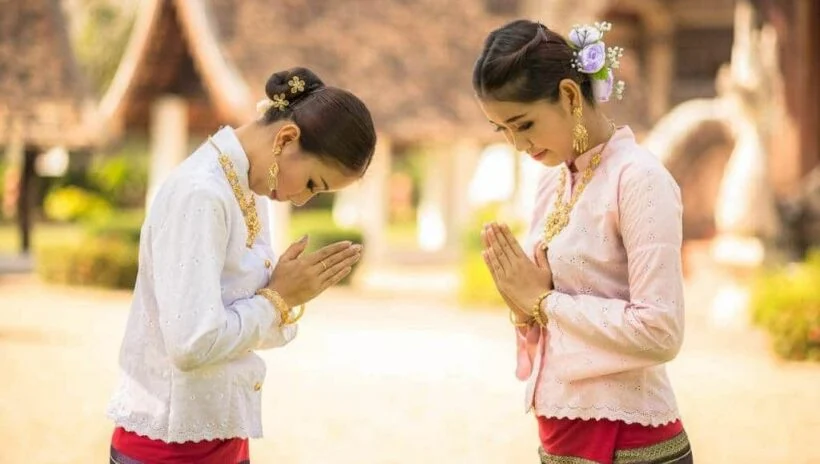
Cultural Etiquette and Customs in Chiang Rai, Thailand
When visiting Chiang Rai, it’s important to be mindful of the cultural etiquette and customs to show respect and immerse yourself in the local traditions. Here are some key aspects to keep in mind:
Respecting Temples and Monks
- When entering temples, remember to remove your shoes before going inside as a sign of respect.
- It is customary to dress modestly when visiting temples. Avoid wearing revealing clothing and ensure your shoulders and knees are covered.
- When encountering monks, offering a wai (a slight bow with your palms together) is polite as a greeting. Returning a monk’s wai with a smile is considered respectful.
- Remember to maintain a quiet and respectful demeanour inside temples to not disrupt those praying or meditating.
Dress Code Awareness
- Dressing appropriately is crucial when exploring Chiang Rai. Opt for clothing that covers your shoulders and knees, especially when visiting temples and other religious sites.
- Wearing revealing clothing may be seen as disrespectful, so it’s best to choose modest attire to show cultural sensitivity.
- Embrace the local dress customs by trying traditional Thai clothing like sarongs or sashes when appropriate.
- By being mindful of the local dress code, you show respect for the culture and avoid unintentionally causing offence during your visit to Chiang Rai.
By adhering to these cultural etiquette guidelines, you can have a more meaningful and respectful experience while exploring the beauty and heritage of Chiang Rai, Thailand.
Must-Visit Attractions in Chiang Rai
Chiang Rai, a city nestled in the mountainous province of the same name in northern Thailand, offers many captivating attractions for visitors.
From intricately designed temples to cultural landmarks, exploring these must-visit sites will provide a rich tapestry of experiences.
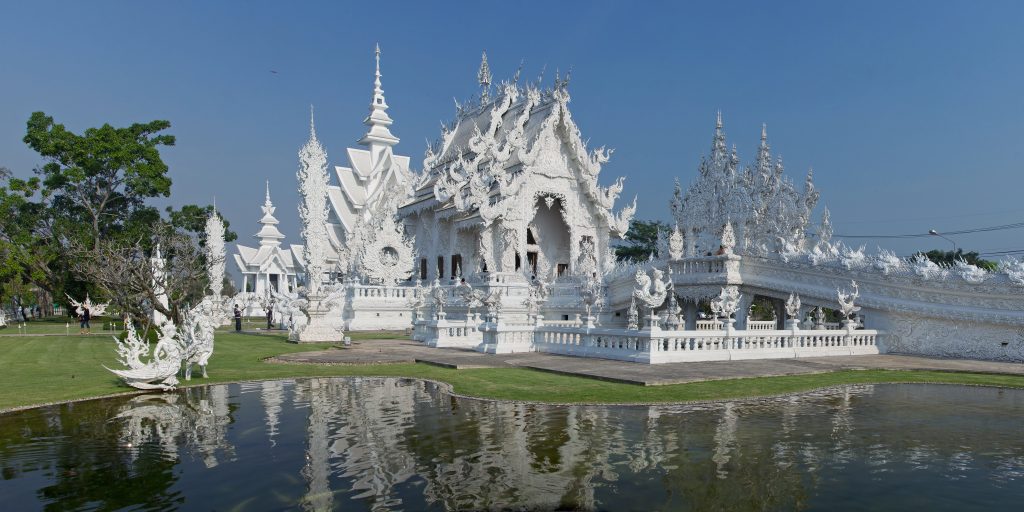
Wat Rong Khun (White Temple)
One of the most iconic landmarks in Chiang Rai is the stunning Wat Rong Khun, also known as the White Temple. This contemporary Buddhist temple is a fusion of traditional Thai architecture with modern artistic influences.
The intricate white exterior adorned with mirrored glass mosaics creates a mesmerizing sight, making it a photographer’s paradise. As you step inside, you’ll be greeted by intricate murals and sculptures that depict Buddhist teachings uniquely and thoughtfully.
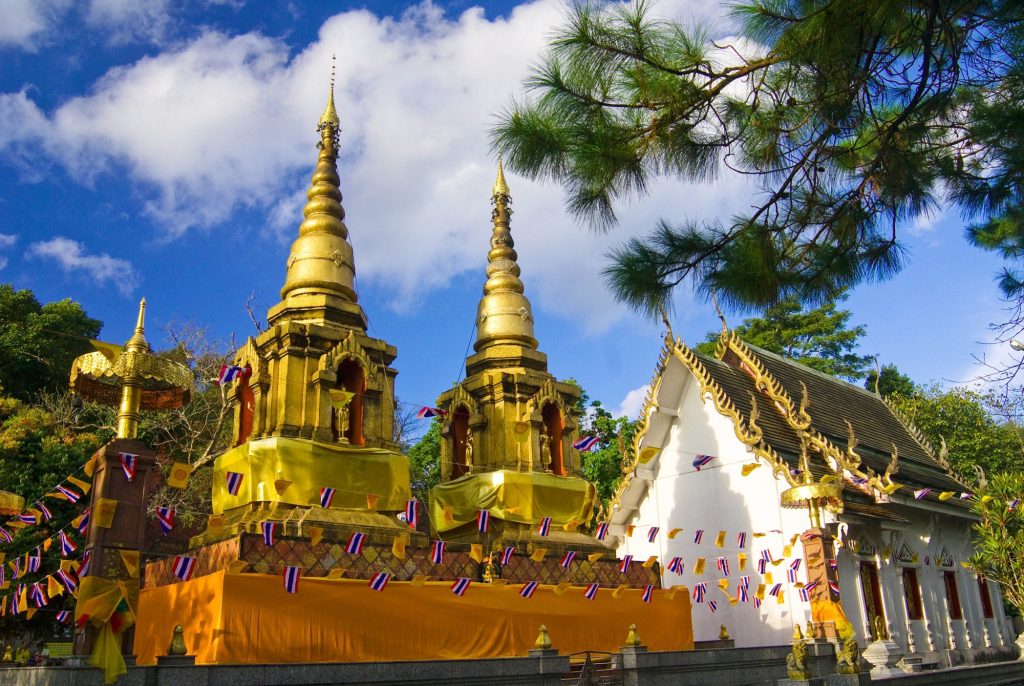
Wat Phra That Doi Tung
Another gem to be noticed is Wat Phra That Doi Tung, situated atop Doi Tung Mountain. This sacred temple offers breathtaking panoramic views of the lush landscape, providing a serene backdrop for spiritual contemplation.
The temple’s golden stupa, said to house relics of the Buddha, exudes a sense of tranquillity and reverence. Take a moment to soak in the tranquillity and immerse yourself in the spiritual ambience of this revered site.
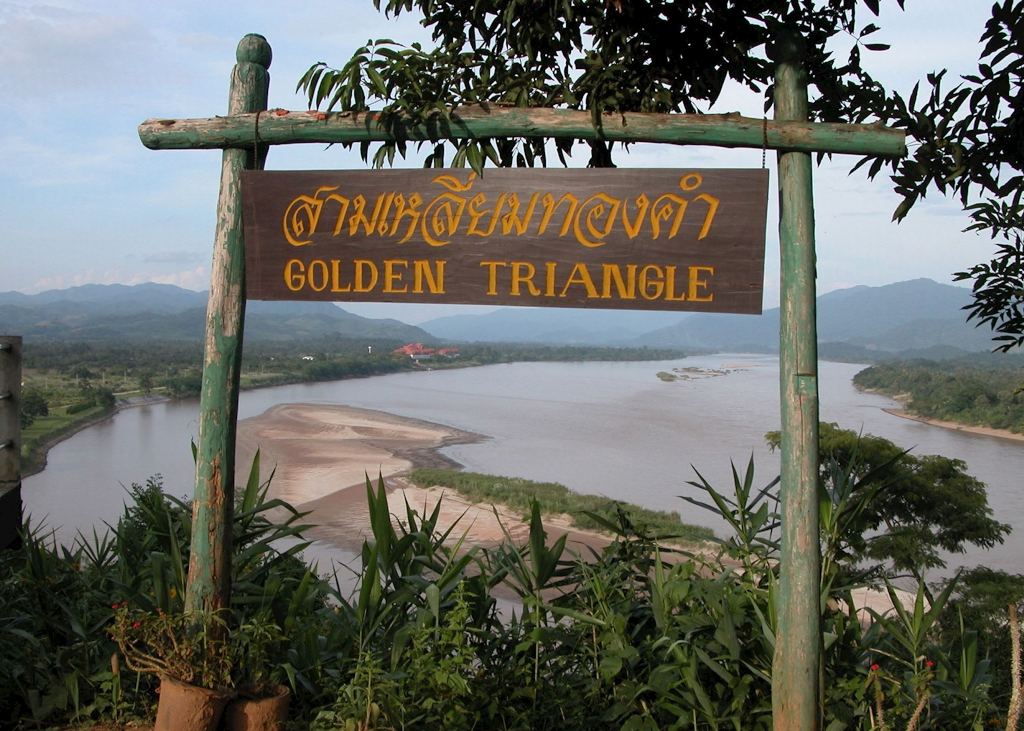
Golden Triangle
A visit to the Golden Triangle is a must for a taste of history and culture. This unique area is situated at the confluence of the Ruak and Mekong Rivers, where the borders of Thailand, Laos, and Myanmar meet.
Historically known for its opium production, the Golden Triangle now offers a glimpse into the region’s past through museums and scenic viewpoints.
Take a boat ride along the Mekong River to witness the meeting of three countries, immersing yourself in the vibrant tapestry of cultures that converge in this enchanting locale.
Embark on a journey of discovery through these must-visit attractions in Chiang Rai, each offering a glimpse into the rich tapestry of history, culture, and spirituality that defines this captivating city in northern Thailand.
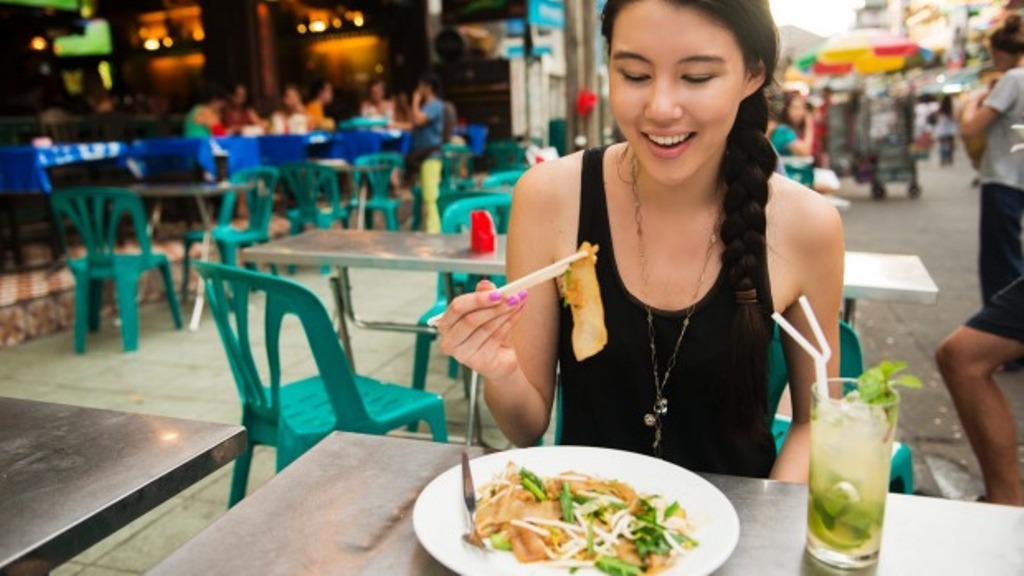
Local Cuisine and Dining Tips
When exploring Chiang Rai, Thailand, immersing yourself in the local cuisine is a must-do experience to understand the culture fully. Here are some tips to enhance your dining adventures in this vibrant city:
Popular Dishes to Try
- Khao Soi Gai Nong (Coconut Curry Noodle Soup with Chicken Leg): A classic favourite in Chiang Rai, this flavorful dish consists of rich coconut curry broth with tender chicken legs and crispy noodles.
- Sai Ua (Northern Thai Sausage): A signature dish of Chiang Rai, Sai Ua is a fragrant and spicy sausage made with a blend of herbs and spices, offering a unique taste of Northern Thai cuisine.
- Roast Duck: Chiang Rai is renowned for its succulent roast duck, marinated in a medley of aromatic Thai herbs and spices, creating a mouthwatering dish that is a true delight for food enthusiasts.
- Sticky Rice with Mango: A popular dessert in Thailand, this sweet treat featured sticky rice drizzled with coconut milk and served alongside fresh, ripe mango slices – a perfect balance of flavours.
Etiquette at Eating Establishments
- Remove Shoes: In some traditional dining establishments or homes, removing your shoes before entering is a common practice to show respect.
- Use Utensils or Hands: While using utensils is common, some dishes are meant to be eaten with your hands, so don’t hesitate to enjoy the local cuisine authentically.
- Respectful Gestures: Thais appreciate polite gestures like the wai (placing palms together in a prayer-like motion) before and after a meal as a sign of gratitude.
- Sharing Food: Sharing dishes is a common practice in Thai culture, so feel free to try a bit of everything and indulge in the communal dining experience.
Exploring the diverse culinary landscape of Chiang Rai offers a glimpse into the heart of Thai cuisine, where flavours, textures, and aromas come together to create unforgettable dining experiences.
Embrace the local customs, savour the unique dishes, and immerse yourself in the culture through the vibrant world of Chiang Rai’s food scene.
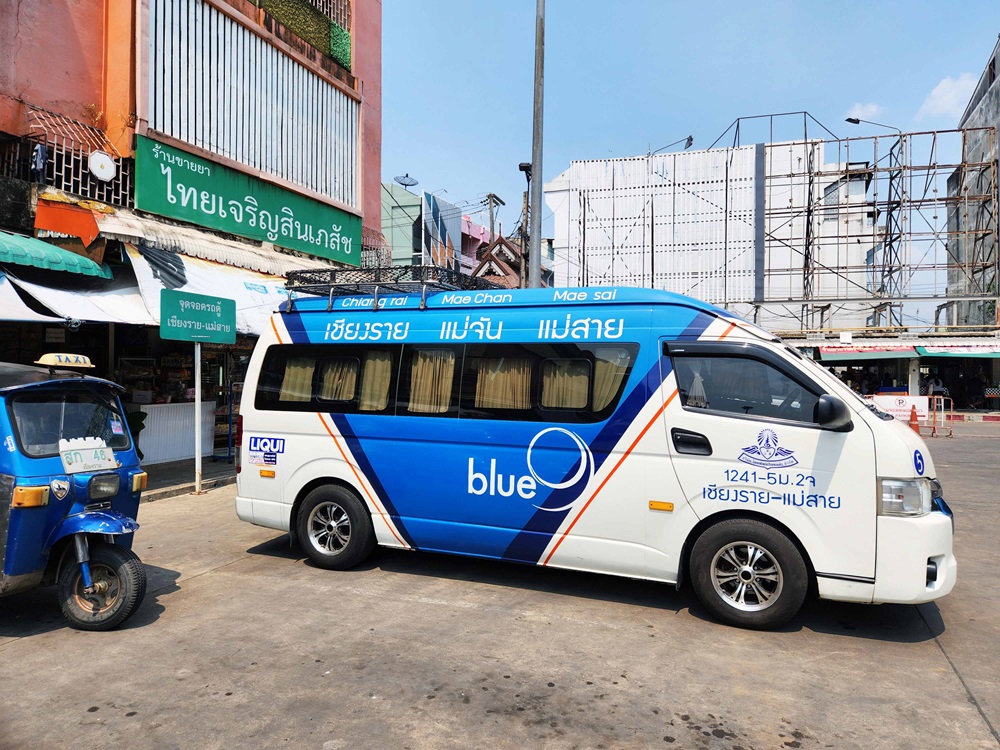
Transportation and Getting Around
Exploring the charming city of Chiang Rai, Thailand, is made seamless with its diverse transportation options.
Whether you prefer the convenience of public transport or the flexibility of private modes, getting around this enchanting destination is a breeze.
Modes of Transportation Available
- Tuk-Tuks: One of the most popular ways to navigate Chiang Rai is by hopping on a colourful tuk-tuk. These iconic three-wheeled vehicles offer a fun and inexpensive way to travel short distances around the city.
- Songthaews: These shared pickup trucks with bench seating are a common sight in Chiang Rai. You can flag down a songthaew along its route or hire one for a more private ride. They are a budget-friendly option for getting around town.
- Taxis: While less prevalent than tuk-tuks and songthaews, taxis are available in Chiang Rai, especially at transportation hubs like the airport and bus stations. Opting for a taxi provides a more comfortable and air-conditioned ride.
Navigating with Public Transport
- Local Buses: Chiang Rai has a network of local buses that connect various parts of the city. These buses are an affordable way to reach different neighbourhoods and attractions.
- Motorbike Taxis: For a quick and adventurous way to move around Chiang Rai, consider hopping on a taxi. These two-wheeled rides can weave through traffic and are ideal for short journeys.
- Renting a Bicycle: Embrace the leisurely pace of Chiang Rai by renting a bicycle. Pedalling around the city allows you to explore at your own pace and discover hidden gems off the beaten path.
With these transportation options, you can easily navigate Chiang Rai and make the most of your visit to this captivating destination in Thailand.
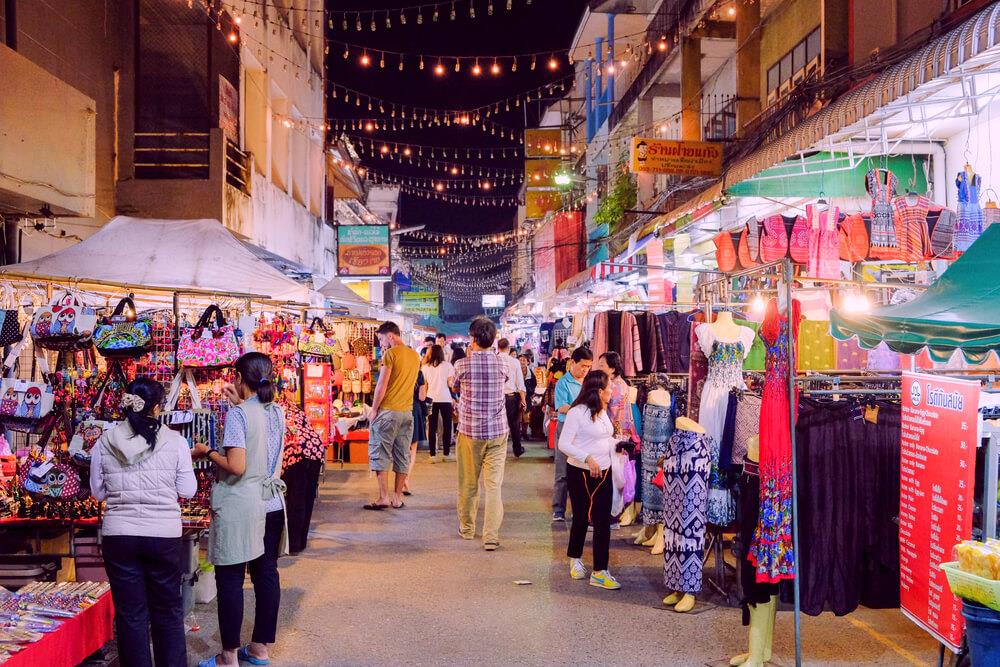
Shopping and Bargaining Tips
When visiting Chiang Rai, Thailand, shopping is a delightful experience with unique finds and local treasures.
Understanding the art of bargaining can enhance your shopping expedition, allowing you to snag the best deals while immersing yourself in the vibrant market culture.
Popular Shopping Spots
Chiang Rai offers a plethora of shopping spots catering to every taste and budget. The Chiang Rai Night Bazaar is a must-visit, with vendors selling various goods, from handmade crafts to delicious street food.
Dive into the bustling Walking Street Market to discover local handicrafts, clothing, and souvenirs that make for perfect keepsakes.
For a more immersive cultural experience, explore the Hill Tribe Villages, where you can purchase traditional handmade items directly from the artisans.
Negotiation Strategies
Regarding bargaining in Chiang Rai, approach it with a friendly and respectful demeanour. Start by greeting the vendor with a smile and show genuine interest in their products.
Remember, bargaining is common in Thailand, so don’t hesitate to negotiate for a better price. Here are some negotiation strategies to keep in mind:
- Start Low: Begin by offering a price significantly lower than the initial asking price. This sets the tone for negotiation and allows room for the vendor to counteroffer.
- Stay Polite: Maintain a polite and amicable attitude throughout the bargaining process. Avoid being overly aggressive or confrontational.
- Be Patient: Bargaining in Chiang Rai is a slow-paced art. Take your time, engage in friendly banter with the vendor, and enjoy the process.
- Know When to Walk Away: If the vendor is unwilling to meet your price and the negotiation reaches a stalemate, don’t hesitate to walk away. Often, this can prompt the vendor to reconsider and offer a better deal.
By mastering the art of shopping and bargaining in Chiang Rai, you can elevate your travel experience, score unique souvenirs, and create lasting memories of exploring the local markets.
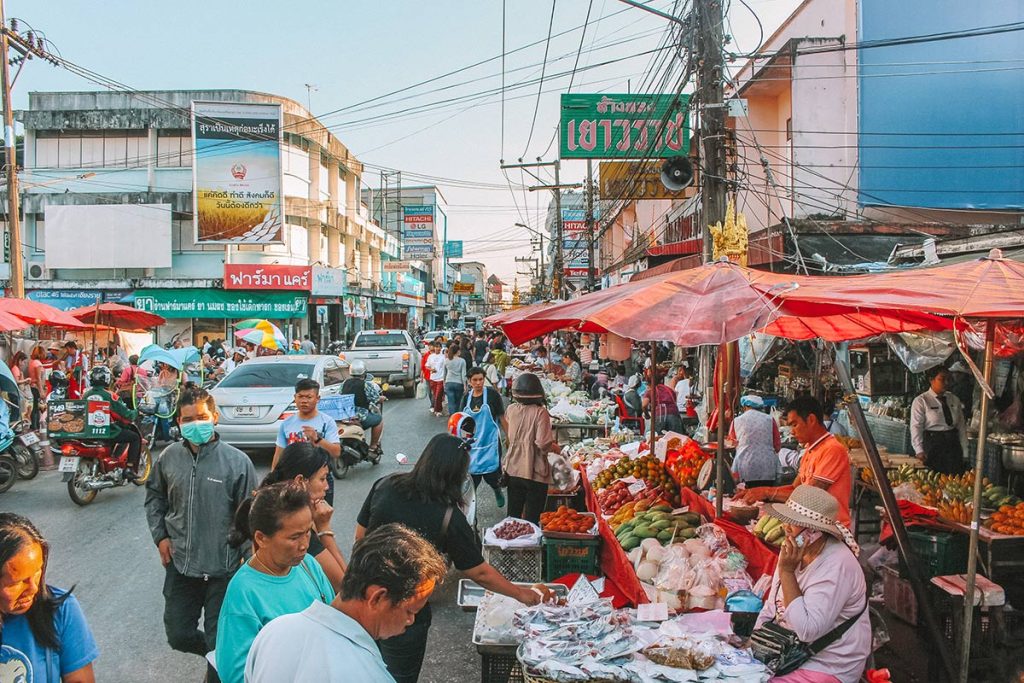
Safety Precautions and Health Tips
Before embarking on your journey to Chiang Rai, Thailand, you must be mindful of your safety and well-being during your visit. Here are some safety precautions and health tips to ensure a smooth and enjoyable trip:
Staying Hydrated and Sun Protection
- Hydration is Key: The tropical climate of Chiang Rai can be relentless, so remember to stay hydrated by drinking plenty of water throughout the day. Carry a reusable water bottle to refill and stay refreshed.
- Sunscreen Essentials: With the sun shining brightly in Thailand, protect your skin by applying sunscreen with a high SPF before heading out. A wide-brimmed hat and sunglasses can provide additional protection from the sun’s rays.
- Seek Shade: When exploring outdoor attractions or markets, take breaks in shaded areas to prevent heat exhaustion and sunburn. Pace yourself and listen to your body’s cues to avoid overheating.
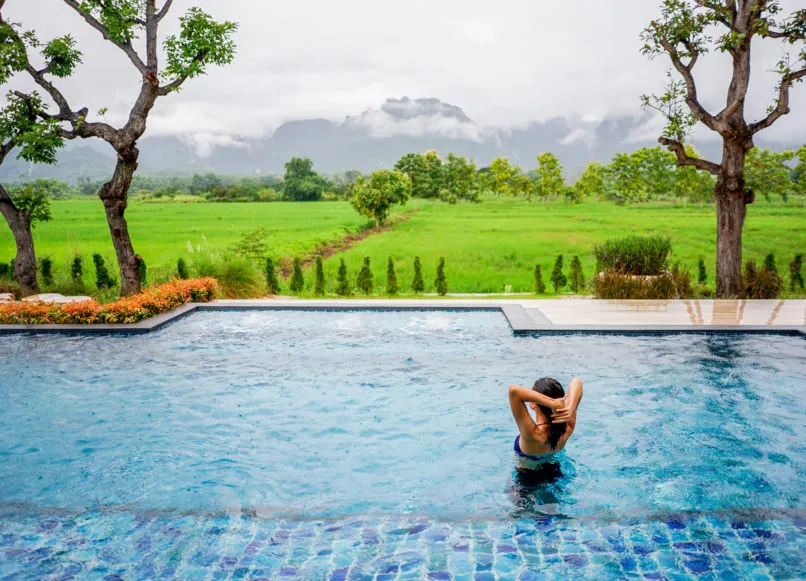
Accommodation Advice
Choosing the right accommodation can greatly enhance your travel experience when visiting Chiang Rai, Thailand. Chiang Rai offers a variety of lodging options, ranging from budget-friendly guesthouses to luxurious resorts. Understanding the types of lodging available and selecting accommodation near key attractions can make your stay memorable.
Types of Lodging Options
- Guesthouses: Ideal for budget travellers, guesthouses provide a cosy and authentic experience. They are often family-run and offer a homely atmosphere.
- Hotels: Chiang Rai boasts many hotels catering to different budgets. You can find accommodation from boutique hotels to international chains to suit your preferences.
- Resorts: For a touch of luxury, consider staying at one of the many resorts in Chiang Rai. Enjoy amenities like spas, pools, and stunning views of the surrounding landscapes.
- Homestays: Experience local culture firsthand by opting for a homestay. Stay with a local family, participate in daily activities, and immerse yourself in the community.
Choosing Accommodation Near Attractions
When deciding on accommodation in Chiang Rai, consider proximity to key attractions to maximize your time exploring the city. Areas around the Clock Tower, Riverside, and the Golden Triangle are popular tourist choices.
- Clock Tower Area: Stay near the iconic Clock Tower in the heart of Chiang Rai’s bustling night market and vibrant atmosphere.
- Riverside: Opt for accommodation along the Kok River for picturesque views and easy access to riverside restaurants and activities.
- Golden Triangle: Explore the historical region where Thailand, Laos, and Myanmar meet by choosing a hotel near the Golden Triangle.
By selecting accommodation near these attractions, you can immerse yourself in the beauty and culture of Chiang Rai while enjoying convenience and accessibility during your stay.

Local Language Phrases
When visiting Chiang Rai, knowing some basic local language phrases to enhance your travel experience and engage with the culture is helpful.
Learning a few words and expressions in Thai can go a long way in connecting with the locals and showing respect for their traditions.
Useful Words and Phrases for Travelers
- Sawatdee: This versatile greeting can be used to say hello and goodbye.
- Khop Khun: A polite way to thank you, showing appreciation for any gestures of kindness.
- Sabai Dee Mai: A common phrase to ask how someone feels, showing genuine interest in their well-being.
- Pen Yang Ngai Bang: An alternative way to ask “How are you?” demonstrating a willingness to engage in conversation.
By incorporating these simple yet meaningful phrases into your conversations in Chiang Rai, you can create memorable interactions and bridge cultural barriers with genuine curiosity and respect.
Embracing the local language adds a personal touch to your travel experience, allowing you to connect on a deeper level and make lasting memories in this vibrant destination.
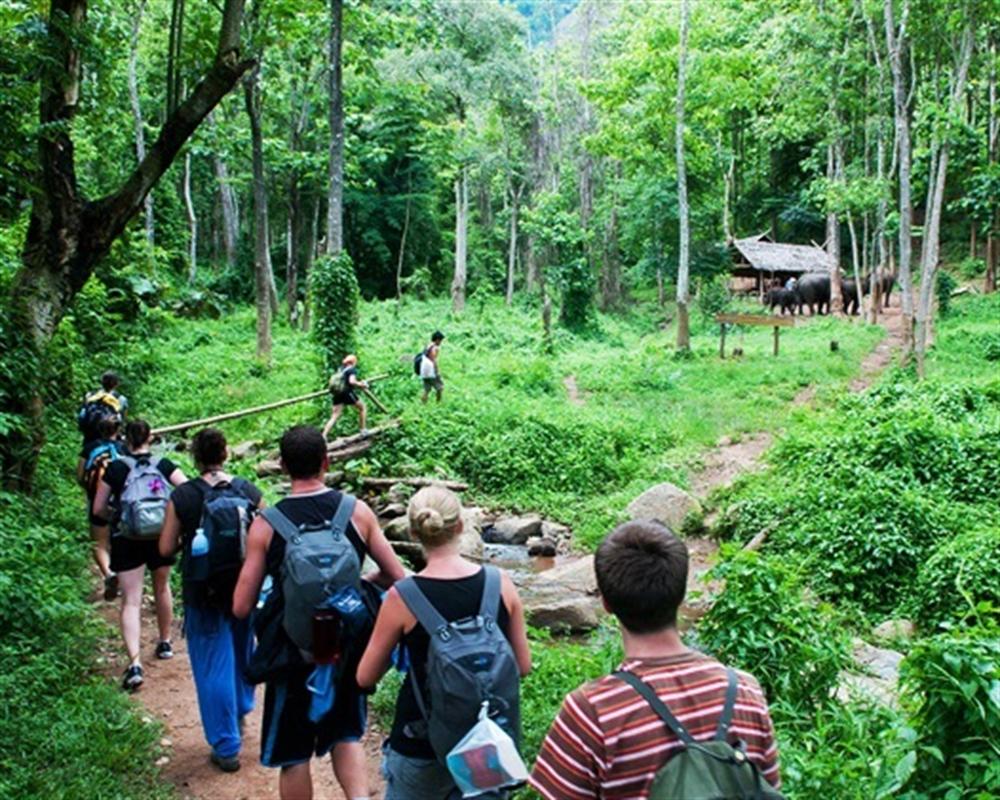
Responsible Tourism Practices
When visiting Chiang Rai, it’s essential to consider responsible tourism practices to minimize your impact on the environment and support local communities.
By engaging in eco-friendly activities and tours, you can actively contribute to preserving the natural beauty of Chiang Rai while creating positive experiences for yourself.
Additionally, supporting local communities helps ensure that the economic benefits of tourism reach those who need it the most.
Eco-Friendly Activities and Tours
- Nature Walks and Hikes: Explore the lush jungles and scenic landscapes of Chiang Rai on foot to appreciate the local flora and fauna.
- Bamboo Rafting: Experience the serene rivers of Chiang Rai on a bamboo raft, a sustainable and eco-friendly way to enjoy the waterways.
- Organic Farm Visits: Engage in farm-to-table experiences by visiting organic farms, learning about sustainable agriculture practices, and enjoying fresh, locally-grown produce.
- Wildlife Conservation Centers: Support wildlife conservation efforts by visiting reputable centres focusing on rescuing and rehabilitating endangered species.
Supporting Local Communities
- Shop at Local Markets: Purchase souvenirs, crafts, and products from local markets to support small businesses and artisans in the community.
- Homestays: Opt for homestay accommodations to immerse yourself in the local culture, interact with residents, and contribute directly to the livelihood of local families.
- Culinary Experiences: Enjoy authentic Thai cuisine at family-run eateries and street food stalls to support local culinary traditions and businesses.
- Volunteering Opportunities: Look for volunteer opportunities with local organizations or initiatives focusing on community development, environmental conservation, or education.
By incorporating these responsible tourism practices into your visit to Chiang Rai, you can positively impact the destination while creating meaningful and sustainable travel experiences for yourself.
Conclusion
Exploring Chiang Rai, Thailand, offers many unforgettable experiences that blend rich culture, stunning landscapes, and warm hospitality. Remember to immerse yourself in the local markets, savour the delectable cuisine, and marvel at the intricate temple architecture.
As you plan your visit to Chiang Rai, remember the significance of respecting local customs and traditions, embracing the slower pace of life, and being open to new adventures around every corner.
Whether captivated by the serene landscape or intrigued by the region’s cultural tapestry, Chiang Rai promises a truly enchanting travel experience that will leave a lasting impression on your heart and mind.
Make the most of your trip by embracing the essence of Chiang Rai and creating memories that will stay with you long after you’ve left this enchanting destination.
Keywords: mueang chiang rai, chiang rai airport, chiang rai province, white temple in chiang rai, chiang rai clock tower, thailand chiang rai, airport chiang rai, things to do in chiang rai, attraction in chiang rai
Chiang Rai News
Why More Expats Love Calling Chiang Rai, Thailand Home
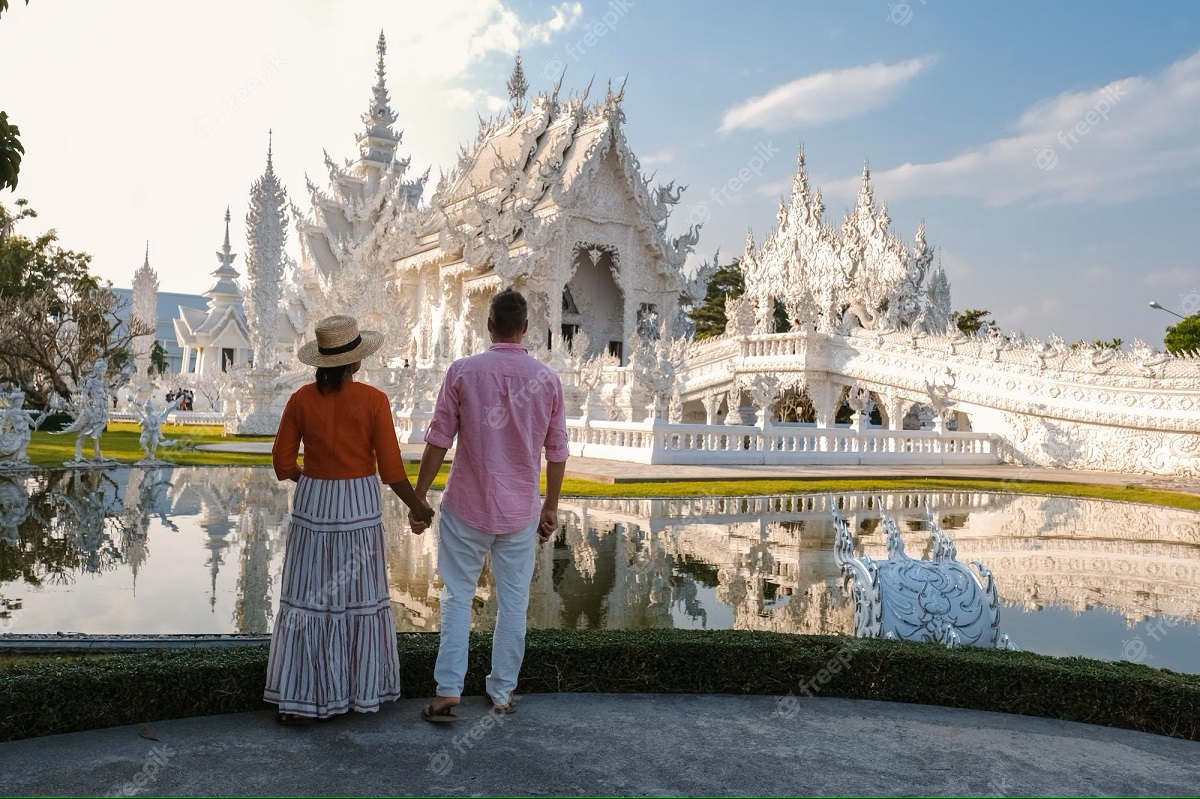
Are you considering a new destination to call home? More and more expats are drawn to the charming city of Chiang Rai, Thailand. This rising trend of expats choosing Chiang Rai as their new residence is fueled by its serene landscapes, affordable cost of living, and welcoming community.
Expats find solace in Chiang Rai’s idyllic country lifestyle, surrounded by majestic mountains and excellent hiking opportunities. The city’s lower cost of living than Western countries makes it an attractive option for retirees seeking a peaceful and financially sustainable life.
One of the standout features of Chiang Rai is its residents’ warm and polite nature, creating a welcoming environment for newcomers. Whether you are looking for a place with a slower pace or a vibrant cultural scene, Chiang Rai offers a blend of tranquillity and opportunities for exploration.
Join the growing number of expats who have found their haven in Chiang Rai, Thailand. Experience the best of both worlds – a laid-back lifestyle amidst stunning natural beauty and a thriving expat community waiting to welcome you with open arms.
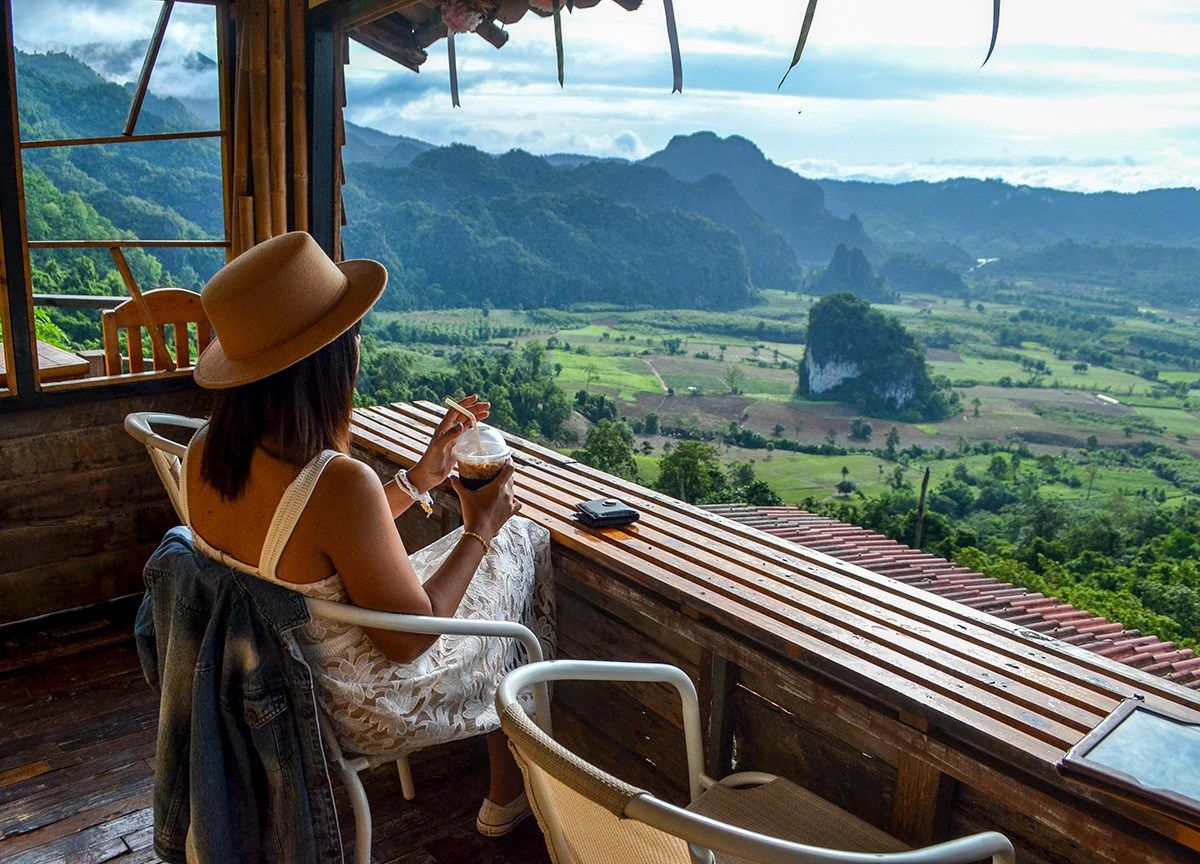
Chiang Rai: The Allure for Expats
Chiang Rai, nestled in the serene countryside of Thailand, has been capturing the hearts of expats worldwide, seeking a tranquil escape from the hustle and bustle of urban life.
Let’s delve into the key aspects that make Chiang Rai a magnet for those looking to embrace a refreshing lifestyle amidst nature’s splendour and cultural richness.
Idyllic Country Lifestyle
The allure of Chiang Rai lies in its idyllic country lifestyle, where lush greenery and majestic mountains paint a picturesque backdrop for expats seeking peace and tranquillity.
The slow-paced living in Chiang Rai offers a seamless blend of nature and modern comforts, making it a perfect haven for those yearning for a simpler yet rewarding life.
The affordability of living costs adds to the appeal, allowing expats to enjoy a quality lifestyle without breaking the bank.
Cultural Richness
Beyond its natural beauty, Chiang Rai boasts a rich tapestry of cultural heritage that fascinates expats looking to immerse themselves in authentic experiences.
The city’s diverse ethnic groups contribute to a vibrant tapestry of traditions, festivals, and historical landmarks that weave a compelling narrative of Thailand’s cultural essence.
From exploring traditional festivities to visiting historical sites, Chiang Rai offers expats a unique opportunity to embark on a cultural quest and unravel the intriguing stories of the region’s past and present.
In Chiang Rai, expats find a harmonious balance between modern amenities and a deep-rooted cultural legacy, fostering a sense of belonging and connection to the heart of Thailand’s identity.
Embracing the tranquillity of its countryside and the vibrancy of its cultural tapestry, expats in Chiang Rai find themselves on a transformative journey where every moment is a testament to the city’s enduring allure.
Cost of Living and Healthcare
Living in Chiang Rai proves to be an attractive choice for expats seeking affordability without compromising on quality. Let’s delve into the details of this charming city’s cost of living and healthcare facilities.
Lower Cost of Living
Regarding the cost of living, Chiang Rai offers a pocket-friendly lifestyle that appeals to expats looking to stretch their budgets while enjoying a high quality of life.
Housing options in Chiang Rai range from affordable apartments to cosy homes, providing expats with diverse choices to suit their preferences and financial plans.
Daily necessities such as groceries, transportation, and utilities come at reasonable prices, enabling expats to manage their expenses efficiently.
Dining out in Chiang Rai is a delightful experience with an array of local eateries and international restaurants offering mouth-watering dishes at affordable prices.
Additionally, leisure activities in Chiang Rai cater to various interests, including exploring nature and cultural sites and engaging in outdoor adventures, all without breaking the bank.
Healthcare Facilities
Chiang Rai boasts commendable healthcare services that cater to the diverse needs of expats residing in the city. The availability of quality medical care facilities reassures expats about access to essential healthcare services when needed.
Expats can find comfort in the range of healthcare options, from clinics to hospitals, ensuring prompt and reliable medical attention. Insurance options in Chiang Rai provide expats with coverage for medical expenses, offering peace of mind and financial protection.
Wellness amenities in the city focus on holistic well-being, promoting a healthy lifestyle among expats and locals alike.
Compared to Western countries, the overall cost of living in Chiang Rai remains significantly lower, making it an appealing choice for expats seeking an affordable yet fulfilling lifestyle.
The city’s blend of cost-effectiveness and quality healthcare services presents a compelling proposition for expats looking to call Chiang Rai home.
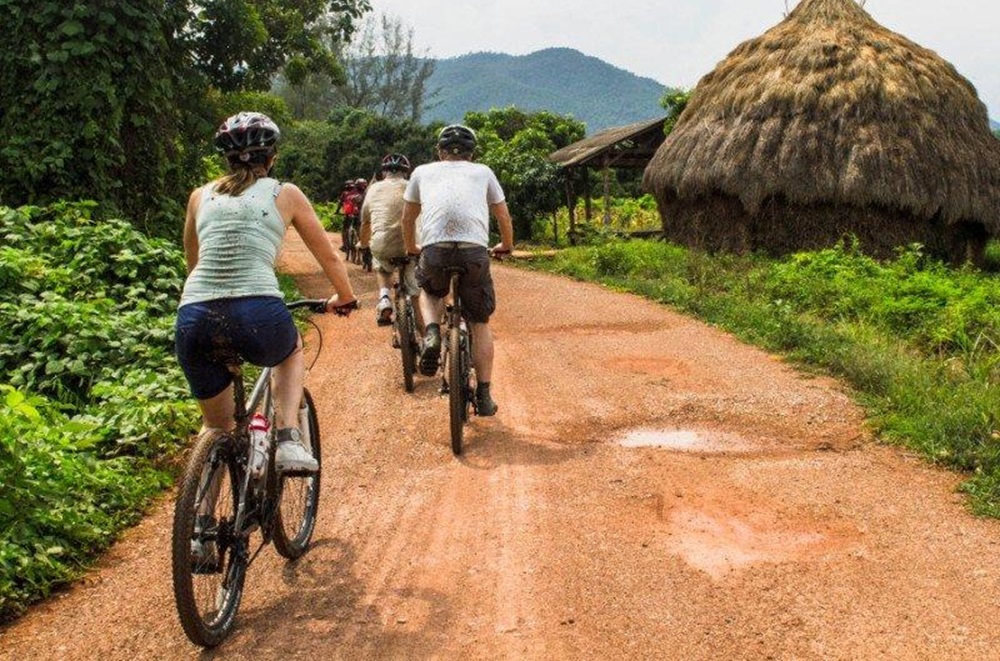
Community and Lifestyle in Chiang Rai
Chiang Rai’s charm goes beyond its picturesque landscapes; its locals’ warmth truly makes expats feel at home.
The locals in Chiang Rai are known for their friendly and welcoming nature, readily embracing newcomers into their community.
Expats find it easy to integrate and build meaningful relationships within this inclusive environment, creating a sense of belonging that transcends borders and cultures.
Warmth of the Locals
The genuine hospitality of Chiang Rai’s residents is a cornerstone of the expat experience in this city. From simple greetings to offering help, the locals go above and beyond to make newcomers feel welcome.
Expats often find themselves quickly immersed in the community through shared meals, cultural exchanges, or participating in local events. Building friendships with locals becomes a natural part of daily life, enriching the expat experience and fostering a sense of connection.
Recreational and Leisure Options
Chiang Rai offers many recreational and leisure options that cater to diverse interests and preferences.
From exploring the vibrant dining scene with its delicious local and international cuisines to engaging in outdoor activities like hiking in the lush mountains or cycling through scenic routes, expats have ample opportunities to stay active and enjoy the natural beauty.
Cultural events, such as festivals and art exhibitions, further enhance the vibrant lifestyle in Chiang Rai, providing expats with a rich tapestry of experiences to immerse themselves in.
With a community that radiates warmth and a lifestyle that celebrates diversity, Chiang Rai stands out as a welcoming haven for expats seeking a place to call home.

Comparative Analysis: Chiang Rai vs. Other Thai Cities
Chiang Rai’s Unique Appeal: Chiang Rai stands out from other Thai cities’ tranquil ambience, cultural authenticity, and community-oriented atmosphere.
The city resonates with expats seeking a peaceful lifestyle immersed in local culture. The serene surroundings and genuine interactions make Chiang Rai a gem for those looking to escape the hustle and bustle of more touristy destinations like Chiang Mai or Bangkok.
Cost-Effective Alternative: When comparing costs, Chiang Rai is a cost-effective alternative to major cities such as Chiang Mai or Bangkok. Expats can enjoy a high quality of life in Chiang Rai at a more affordable price. From housing to daily expenses, Chiang Rai offers expats the opportunity to stretch their budget further without compromising comfort or experiences.
This financial advantage and the city’s unique charm make Chiang Rai an attractive choice for those looking to settle in Thailand.
In Chiang Rai, expats can embrace a lifestyle that combines affordability with authenticity, making it a compelling option for those seeking a balance between cost savings and quality living standards.

Conclusion
Chiang Rai, Thailand, is an increasingly preferred destination for expats seeking charm, affordability, community spirit, and unique lifestyle offerings.
The city’s allure is in its stunning natural landscapes and the warm and welcoming community that embraces diversity and individuality. Expatriates are drawn to the tranquil pace of life, allowing them to savour each moment and appreciate the beauty surrounding them.
Affordable Living
One of the key attractions of Chiang Rai for expats is home affordability. With lower living costs than in Western countries, expats find it easier to maintain a comfortable lifestyle without breaking the bank.
From housing to food and entertainment, Chiang Rai offers a budget-friendly environment that allows expatriates to make the most of their earnings.
Community Spirit
The strong sense of community in Chiang Rai is another reason expats choose this city as their home.
Living in Chiang Rai means being part of a close-knit and inclusive society, whether it’s the friendly locals who are always ready to lend a helping hand or the expat community that offers support and camaraderie.
Unique Lifestyle Offerings
Chiang Rai’s unique lifestyle offerings cater to expatriates seeking a fulfilling living experience. From vibrant markets bursting with local delicacies to serene temples where one can find peace and solace, Chiang Rai provides a harmonious blend of traditional culture and modern amenities.
Expats can immerse themselves in new experiences and create lasting memories in this culturally rich city.
Enriching Living Experience
Overall, Chiang Rai Province offers expats an enriching living experience that goes beyond just a change in scenery. It provides a sense of belonging, where individuals from different backgrounds come together to create a diverse and harmonious community.
Choosing Chiang Rai as a home means embracing a lifestyle that values authenticity, connection, and personal growth.
Chiang Rai News
Western Families Settling Down in Chiang Rai and Embracing the Lifestyle
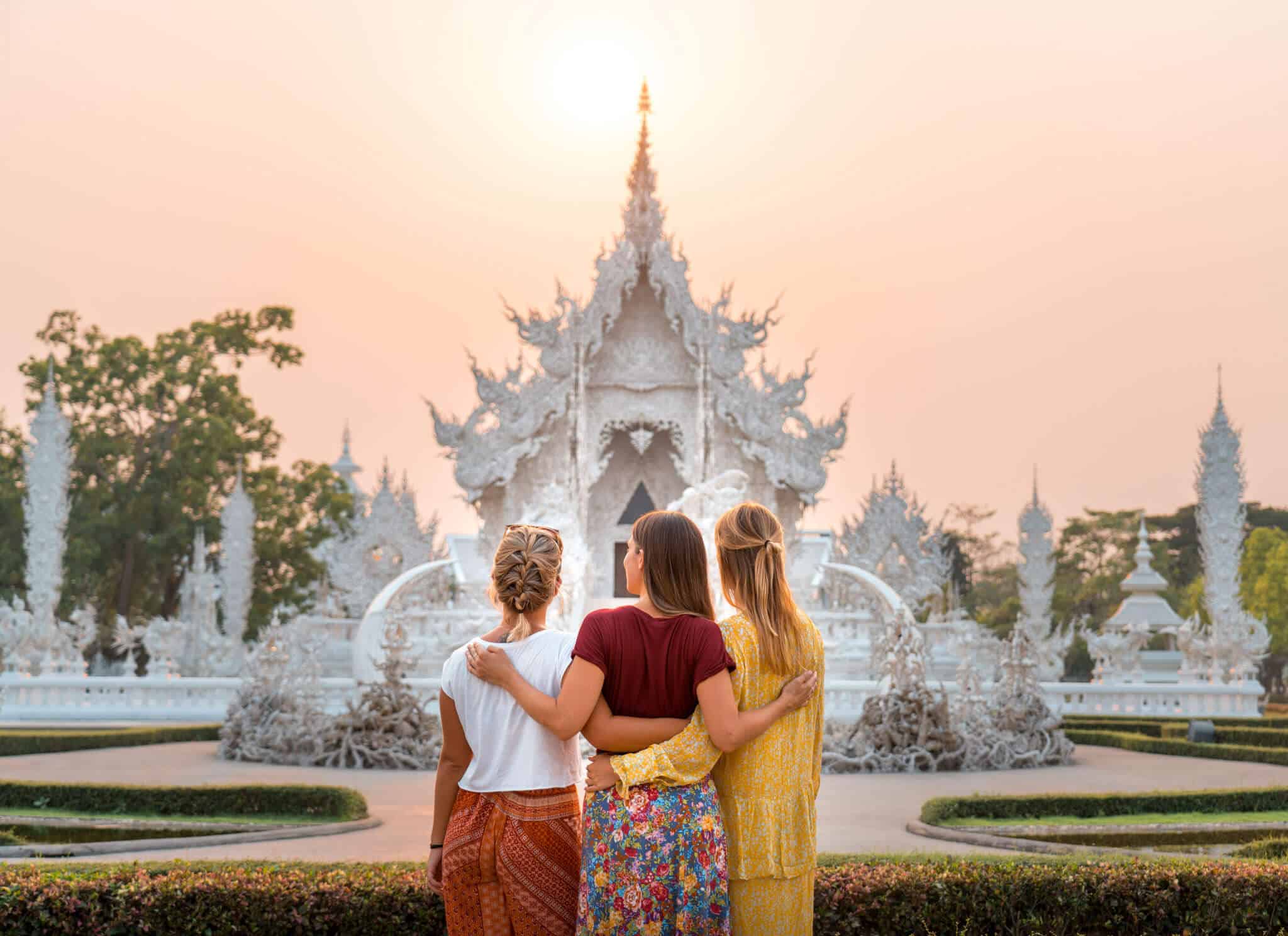
Are you considering a move to Chiang Rai? Many Westerners are drawn to the city’s serene atmosphere, rich cultural heritage, and affordable cost of living. In this blog post, we will explore the various aspects of relocating to Chiang Rai, including the lifestyle, housing options, healthcare, and cultural integration.
Whether you’re seeking a peaceful retirement destination or a new adventure, Chiang Rai has a lot to offer.
Understanding Chiang Rai
Chiang Rai, located in the northernmost part of Thailand, offers a unique cultural experience amidst its picturesque landscapes. The region is characterized by a tropical savanna climate, with distinct dry and wet seasons. This allows for comfortable weather most of the year, making it an appealing destination for Westerners seeking a change in climate.
Location and Climate
Chiang Rai is nestled amid the rolling hills of the Golden Triangle, where Thailand, Laos, and Myanmar converge. The city boasts a serene environment with lush greenery and a slower, more relaxed pace of life. The climate features pleasantly warm winters and hot, humid summers, providing a welcome contrast for those accustomed to colder Western climates.
Cost of Living
Compared to many Western countries, the cost of living in Chiang Rai is notably lower. Accommodation, food, and transportation expenses are generally more affordable, allowing expatriates to lead a comfortable lifestyle without breaking the bank. This affordability makes Chiang Rai an attractive option for those looking to stretch their income further while enjoying a high quality of life.
Lifestyle and Culture
Chiang Rai offers a blend of traditional Thai culture and modern amenities. Residents can explore bustling markets, visit ornate temples, and partake in vibrant local festivals. The city’s rich heritage and warm hospitality create an inviting atmosphere for expatriates looking to immerse themselves in a new cultural experience. Additionally, the city provides a range of recreational activities, from trekking in the nearby mountains to relaxing by the Mae Kok River.
Whether seeking a tranquil retreat or a vibrant cultural immersion, Chiang Rai presents a compelling destination for Westerners looking to embrace a new way of life in Thailand.

Moving Logistics
Visa Requirements
When moving to Chiang Rai, it’s crucial to navigate the visa requirements to ensure a smooth transition. For Westerners, obtaining the correct visa is essential for legal residence in Thailand.
The most common options include the tourist visa, non-immigrant visa, and retirement visa. Each type has specific criteria, application processes, and validity periods. It’s advisable to consult with the Thai embassy or consulate in your home country to determine the most suitable visa option for your circumstances.
Finding Accommodation
Securing suitable accommodation is a top priority when relocating to Chiang Rai. Whether you prefer the bustling city center or a serene rural setting, the region offers diverse housing options. From modern apartments to traditional Thai houses and villas, there’s something to cater to every preference.
Websites like DDProperty and K Estate are valuable resources for browsing available properties. Additionally, joining local expat communities can provide firsthand recommendations and insights into the best neighborhoods and housing deals.
Healthcare Options
Access to quality healthcare is a fundamental consideration for expats moving to Chiang Rai. The city boasts numerous hospitals, clinics, and medical facilities catering to international residents.
Expats can opt for private health insurance or utilize the services of public and private healthcare providers. Bumrungrad International Hospital and Bangkok Hospital Chiang Rai are renowned for their world-class medical care and English-speaking staff. Prioritizing healthcare options and coverage ensures peace of mind and a seamless transition to life in Chiang Rai.
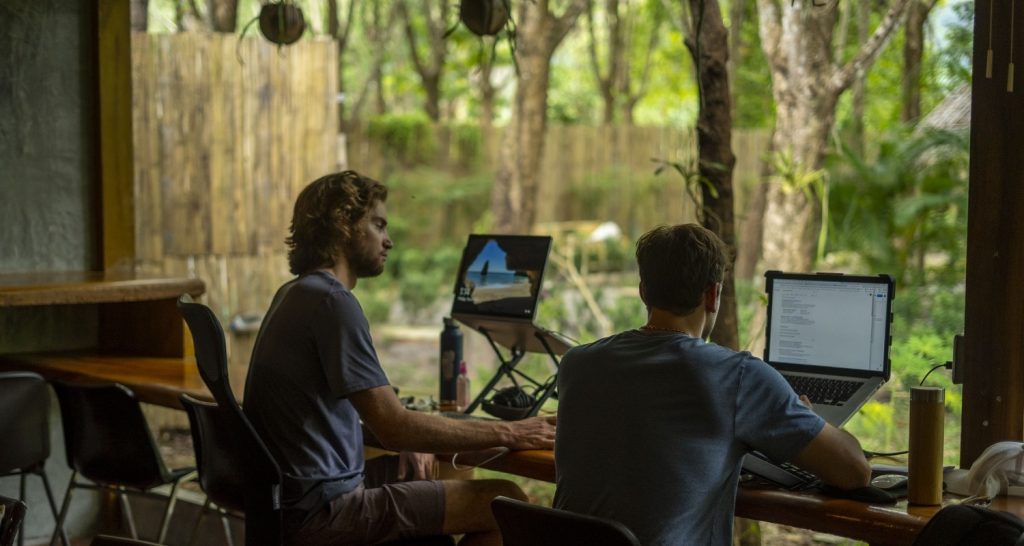
Employment Opportunities
Moving to Chiang Rai as a Westerner may prompt considerations about employment opportunities. The job market is predominantly centered around the tourism and hospitality industry, offering roles in hotels, resorts, and ecotourism ventures. There are also opportunities in teaching English as a foreign language.
Job Market Overview
Chiang Rai’s job market is buoyed by its thriving tourism sector, with demand for English-speaking professionals in various roles such as customer service, tour guiding, and hospitality management. For those with teaching credentials, international schools and language centers often have openings for qualified instructors.
Work Permit Procedures
Foreigners seeking employment in Chiang Rai must secure a work permit to comply with Thai labor laws. The process involves obtaining a non-immigrant visa, finding a job with an employer willing to sponsor the work permit, and then completing the necessary paperwork with the Department of Employment within the Ministry of Labor.
Freelancing and Remote Work
For individuals inclined towards freelancing or remote work, Chiang Rai offers a conducive environment. With the availability of co-working spaces and a growing digital nomad community, freelancers can find opportunities in online content creation, web development, graphic design, and other digital services. Additionally, the city’s low cost of living is appealing to remote workers seeking a balance between work and leisure.

Education and Family Life
Chiang Rai offers a welcoming environment for families looking to relocate, featuring a range of international schools that provide top-quality education. Families can choose from schools such as Chiang Rai International Christian School and Satit Bilingual School of Rangsit University, which offer internationally recognized curricula and a diverse student body.
International Schools
These institutions cater to the needs of expatriate families, providing a holistic education that combines academic rigor with extracurricular activities and a focus on cultural diversity. With English-speaking staff and modern facilities, these schools ensure a smooth transition for children into the local educational system.
Family-Oriented Activities
Families in Chiang Rai can take advantage of a multitude of activities geared towards all age groups. From exploring the natural beauty of Doi Tung Mountain to visiting the innovative Baan Dam Museum, there are numerous opportunities for families to bond and create lasting memories. Additionally, the city boasts vibrant markets, parks, and recreational centers, ensuring there is always something exciting to do.
Healthcare and Childcare Facilities
Chiang Rai is equipped with modern healthcare facilities, including private and public hospitals, ensuring access to quality medical care for families. Furthermore, the city offers various childcare services, such as daycare centers and preschools, allowing parents to attend to their professional commitments with peace of mind.
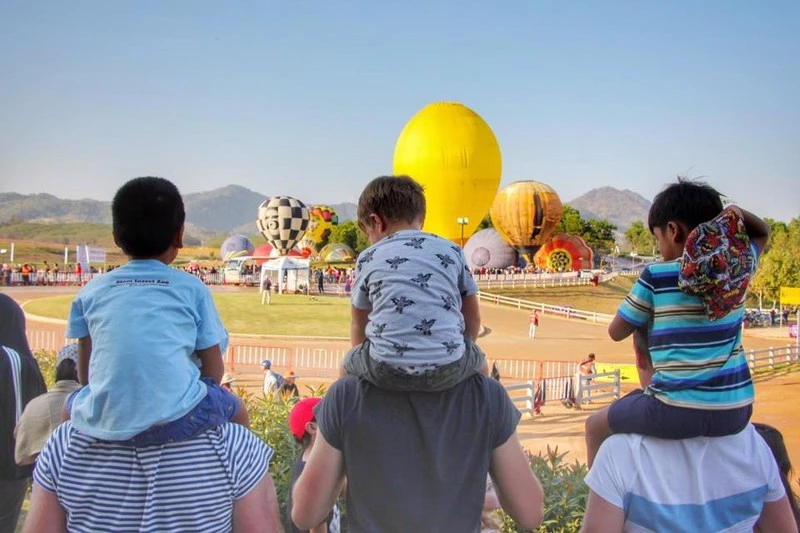
Integration and Social Life
Language and Communication
Moving to a new country usually comes with the challenge of language barriers. In Chiang Rai, English is not as widely spoken as in larger cities in Thailand. However, many locals, especially in tourist areas, know basic English, making it possible to navigate daily interactions. Learning basic Thai phrases can greatly enhance communication and foster positive interactions with the local community.
Expat Communities
Chiang Rai has a growing expat community, providing a valuable support network for newcomers. Expats often gather in social settings, such as cafes and restaurants, to share experiences and offer advice. Joining these communities can help westerners feel more integrated, learn from others who have already acclimated, and make new friends with shared experiences.
Local Events and Festivals
Participating in local events and festivals offers a rich opportunity for westerners to immerse themselves in the culture of Chiang Rai. Exciting events like the Songkran water festival and the Yi Peng lantern festival showcase the vibrant traditions and customs of the region, allowing expats to feel more connected to their new home. Attending these events can foster a sense of belonging and appreciation for the local way of life.

Exploring Chiang Rai
Chiang Rai, a city nestled in the mountainous province of Northern Thailand, is a haven for travelers seeking an authentic and enriching experience. From picturesque landscapes to rich cultural heritage, this city has a lot to offer. Let’s dive into the top aspects of exploring Chiang Rai.
Tourist Attractions
- The White Temple (Wat Rong Khun): A stunning contemporary Buddhist temple known for its intricate white exterior adorned with pieces of mirrored glass shimmering in the sunlight. Visitors are left in awe by the surreal and otherworldly design.
- The Blue Temple (Wat Rong Suea Ten): This recently constructed masterpiece captivates with its vibrant blue interior, adorned with intricate artwork and a mesmerizing, larger-than-life white Buddha statue.
- The Black House (Baan Dam Museum): An unconventional and thought-provoking museum featuring a collection of artwork and architecture created by renowned Thai artist Thawan Duchanee, showcasing a darker, more enigmatic side of Thai artistry.
Outdoor Activities
- Doi Tung: A mountain offering breathtaking panoramic views of the surrounding valleys, making it an ideal spot for hikers and nature enthusiasts. The Doi Tung Royal Villa and Mae Fah Luang Garden are also must-visit attractions in this area.
- Kok River Cruise: Embark on a serene boat journey down the Kok River, immersing yourself in the tranquil beauty of the lush landscapes and observing local life along the riverbanks.
- Phu Chi Fa: An awe-inspiring spot to witness the sunrise, with mist-shrouded peaks and an ethereal ambiance that feels like stepping into a dream.
Local Cuisine and Dining
When it comes to dining in Chiang Rai, prepare your taste buds for a delightful adventure:
- Khao Soi: This beloved Northern Thai dish features egg noodles in a creamy, coconut-based curry broth, topped with crispy noodles, shallots, and a choice of meats. The unique blend of flavors and textures is a true culinary delight.
- Sai Ua: A tasty and aromatic Northern Thai sausage made with a blend of herbs and spices, providing a flavorful kick that will leave you craving for more.
- Kaeng Hang Le: This rich and fragrant Burmese-influenced pork curry is a local specialty, simmered to perfection with a tantalizing combination of spices and ingredients.
Chiang Rai’s vibrant culinary scene offers a fusion of flavors to satisfy every palate, making it a paradise for food enthusiasts. Indulge in the diverse array of street food, local eateries, and charming cafes scattered throughout the city.
Embrace the spirit of exploration and immerse yourself in the captivating allure of Chiang Rai, where every corner reveals a new discovery and every experience leaves an indelible impression.
Conclusion
Moving to Chiang Rai as a Westerner offers a unique opportunity to immerse oneself in a rich and vibrant culture while enjoying the natural beauty of the region. The city’s affordable cost of living, welcoming community, and diverse range of activities make it an attractive destination for expatriates seeking a new and enriching experience.
With its blend of modern amenities and traditional charm, Chiang Rai has much to offer those looking to embrace a different way of life. Whether it’s exploring the local markets, engaging in volunteer work, or simply taking in the stunning landscapes, Chiang Rai provides a welcoming environment for Westerners seeking a fresh start in a captivating new setting.
-

 News3 years ago
News3 years agoLet’s Know About Ultra High Net Worth Individual
-
Entertainment1 year ago
Mabelle Prior: The Voice of Hope, Resilience, and Diversity Inspiring Generations
-

 Health3 years ago
Health3 years agoHow Much Ivermectin Should You Take?
-

 Tech2 years ago
Tech2 years agoTop Forex Brokers of 2023: Reviews and Analysis for Successful Trading
-

 Lifestyles2 years ago
Lifestyles2 years agoAries Soulmate Signs
-

 Health2 years ago
Health2 years agoCan I Buy Ivermectin Without A Prescription in the USA?
-

 Movies2 years ago
Movies2 years agoWhat Should I Do If Disney Plus Keeps Logging Me Out of TV?
-

 Learning2 years ago
Learning2 years agoVirtual Numbers: What Are They For?


